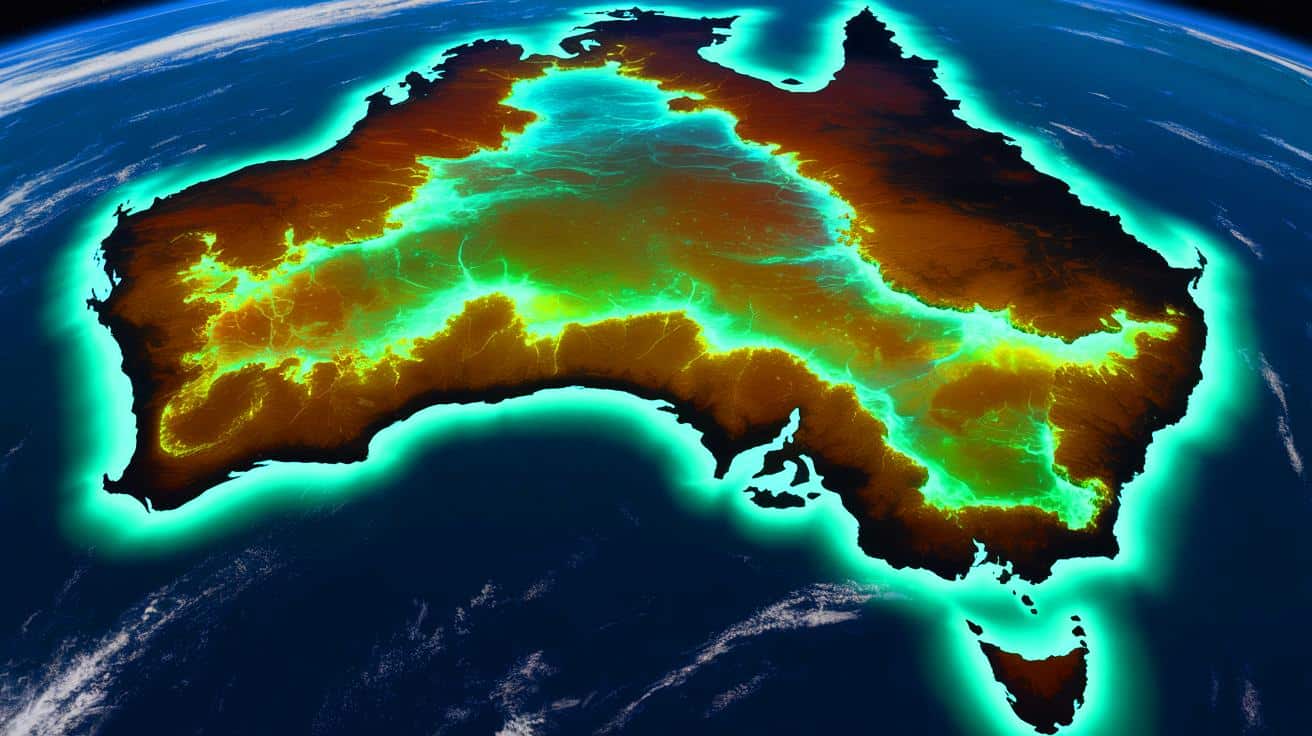IN A NUTSHELL
🌊 NASA satellites captured a stunning turquoise glow off Australia’s southern coast, revealing a massive bioluminescent phytoplankton bloom.
🛰️ The glow was first documented by NASA’s PACE spacecraft and further observed by other satellites, showcasing the bloom’s seasonal nature.
🔬 High concentrations of chlorophyll-a in the phytoplankton cause the remarkable glow, thriving in the nutrient-rich ocean’s photic zone.
🐋 This phenomenon supports a rich marine ecosystem, attracting blue whales and a variety of sea life, highlighting the ecological importance of these algal blooms.
The recent detection of a vibrant turquoise glow off Australia’s southern coast has garnered significant attention. This bioluminescent event, identified by NASA satellites, was observed in the waters of the Great Australian Bight and Tasman Sea. Known as a phytoplankton bloom, this phenomenon illuminates the complex and often mesmerizing processes occurring within our oceans. Beyond the visual spectacle, these glowing marine organisms play a pivotal role in sustaining marine ecosystems. The discovery underscores the intricate balance of ocean life and the critical role of scientific observation in understanding these natural occurrences.
Phytoplankton Glow Captured From Space
NASA’s PACE spacecraft first documented the bioluminescent glow near Australia using its Ocean Color Instrument (OCI). The satellite images revealed a stunning turquoise light illuminating the waters between mainland Australia and Tasmania. This area, characterized by turbulent currents and deep channels, is a crucial maritime route leading into Port Phillip Bay, home to the bustling city of Melbourne.
This was not an isolated observation. Previous detections were made by the Suomi NPP satellite and the Terra and Aqua satellites in late 2023 and early 2024. These repeated sightings allowed scientists to track the bloom’s patterns and understand its seasonal nature. The consistent visibility of these blooms in high-resolution satellite imagery provides valuable insights into the oceanographic dynamics of this region, emphasizing the critical role of technology in marine research.
Uncovering the Source of the Glow
The spectacular turquoise glow is primarily due to the high concentration of chlorophyll-a in the phytoplankton. This green pigment is essential for photosynthesis, enabling these microscopic organisms to flourish in the ocean’s photic zone. Here, sunlight penetrates the surface, allowing the phytoplankton to use nutrients like nitrogen and phosphorus, released from decaying marine life.
Jochen Kaempf, an oceanographer from Flinders University, has extensively studied these blooms. He explains that the green filaments visible from space indicate a phytoplankton bloom extending along the shelf break, approximately 500 feet deep. The surrounding blue hues might result from sediment disturbance in shallower areas or different phytoplankton species contributing to the glow. This intricate interplay of marine elements showcases the complexity and beauty of oceanic ecosystems.
Ecological Significance in the Bass Strait
Phytoplankton are foundational to the marine food web, supporting a diverse range of oceanic life. On the Bonney Coast, these blooms are a vital feeding ground for various marine species. Each year, an estimated 80 blue whales are drawn to the area, attracted by the abundance of krill and other small organisms that feed on the phytoplankton. The blooms also sustain sardines, anchovies, tuna, crabs, and numerous fish species, making the region a vibrant hotspot of marine biodiversity.
In addition to their ecological role, these algae are crucial for global oxygen production and climate regulation. NASA scientists highlight that the visibility of such blooms from space underscores the significance of ocean circulation, nutrient cycling, and seasonal dynamics along the southern Australian coast. The presence of bioluminescent phytoplankton illustrates both the beauty and ecological importance of microscopic marine life, reminding us of the ocean’s vital role in sustaining life on Earth.
Looking Ahead: What Next for Ocean Exploration?
As exploration and understanding of the ocean continues to evolve, discoveries like the bioluminescent phytoplankton bloom off Australia’s coast provide invaluable insights into marine ecosystems. These phenomena not only captivate the imagination but also underscore the importance of oceanographic research in understanding climate change and ecological balance. With advancements in satellite technology, our ability to monitor and study these events will improve, offering new opportunities for scientific discovery and environmental protection. What other hidden wonders lie beneath the ocean’s surface, awaiting discovery by the vigilant eyes of our satellites?
This article is based on verified sources and supported by editorial technologies.
Did you like it? 4.4/5 (29)

